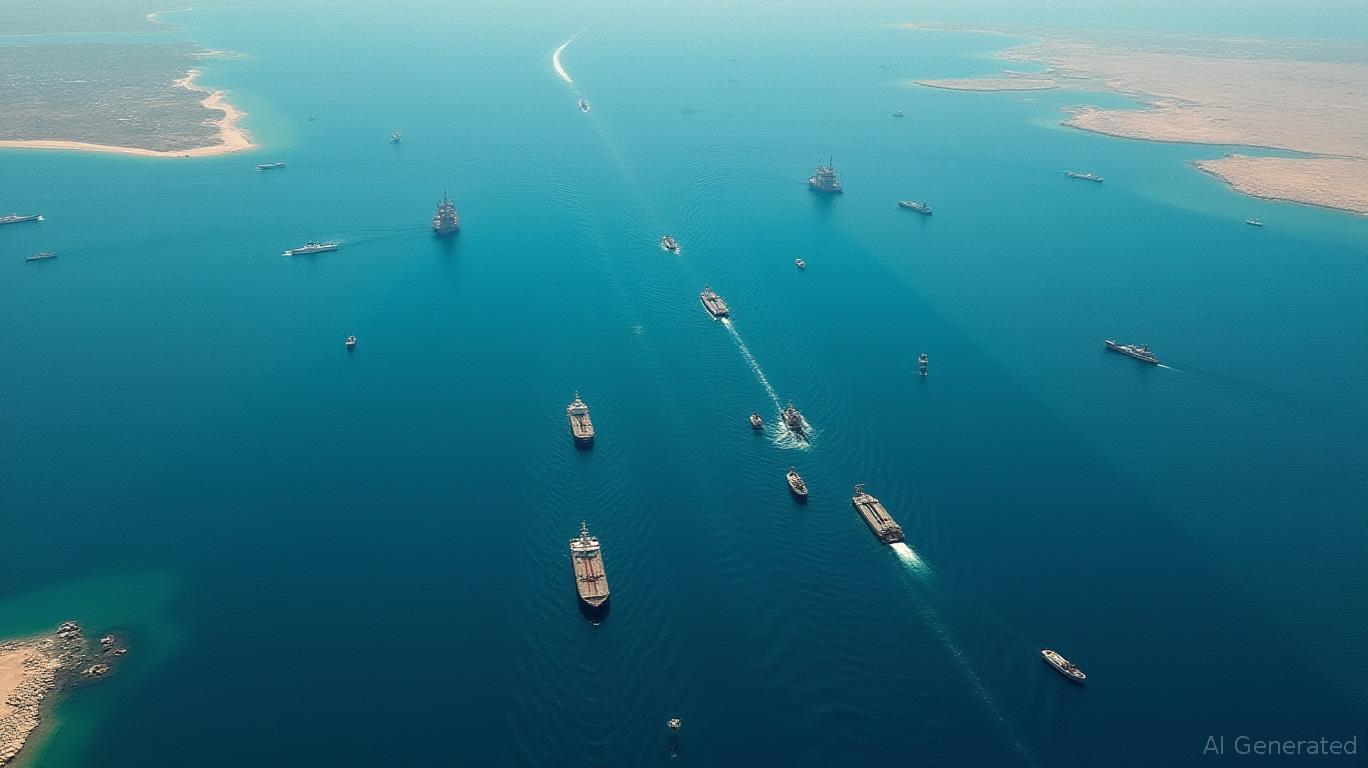The Strait of Hormuz, a 21-mile-wide maritime bottleneck, is the lifeline for 20% of the world’s oil supply and 30% of its liquefied natural gas (LNG) trade. Recent geopolitical tensions—sparked by Iranian threats, U.S.-Israeli military posturing, and sanctions—have turned this strategic waterway into a flashpoint for energy market volatility. For investors, the region’s instability presents both risks and opportunities in commodity-linked equities. Here’s how to navigate this storm.
The Geopolitical Crossroads
The Strait of Hormuz has become a theater for escalating U.S.-Iranian tensions, with recent developments underscoring its fragility. In June 2025, the Pentagon authorized the voluntary departure of military dependents from Middle Eastern bases, while Iran’s Revolutionary Guard conducted live-fire naval drills near shipping lanes. These actions followed Israeli airstrikes on Iranian targets and U.S. sanctions targeting Iran’s construction sector and strategic materials.
The stakes are immense: over 20 million barrels of crude oil and 25% of global LNG transit the strait daily. Even minor disruptions—such as insurance cost spikes or rerouting delays—can trigger price surges. Analysts warn that a full closure, while unlikely due to Iran’s reliance on oil exports, could push Brent crude toward $100/barrel.

Market Impact: Volatility Fuels Commodity Markets
The recent geopolitical flare-up has already rippled through energy markets.
Oil Prices: Brent crude surged to a six-month high of $77.66/barrel in mid-June, with analysts predicting spikes toward $100/barrel if tensions escalate. LNG and Chemicals: Over 25% of global LNG and 35% of methanol transit the strait. Disruptions have added $0.50–$1.00/barrel to freight costs, squeezing refining margins. Equity Performance: The S&P 500 Energy sector has outperformed the broader market by 18% year-to-date, driven by exposure to oil and gas producers like Chevron (CVX) and Exxon Mobil (XOM). Investment Implications: Playing Defense and Offense1. Exposure to Energy Equities
Investors should consider overweighting energy stocks, particularly those with low-cost production and exposure to oil sands or shale. Chevron (CVX) and Devon Energy (DVN) are well-positioned to benefit from higher oil prices. ETFs like the SPDR S&P Oil & Gas Exploration & Production ETF (XOP) provide diversified access to the sector.
2. Hedging with Safe-Haven Assets
Geopolitical risks have already driven investors to gold and the U.S. dollar. Gold prices hit $2,100/oz in June 2025, while the dollar strengthened as a haven. Consider holding SPDR Gold Shares (GLD) or iShares 20+ Year Treasury Bond ETF (TLT) to mitigate inflation and currency risks.
3. Monitor LNG and Chemical Plays
Companies with LNG export terminals, such as Cheniere Energy (LNG), or chemical producers reliant on Middle Eastern feedstocks, like Dow Inc. (DOW), could face supply chain pressures. Short-term volatility may create buying opportunities if disruptions ease.
4. Avoid Overexposure to Geopolitical Bets
While energy equities benefit from price spikes, prolonged conflict could lead to a global recession, dampening demand. Diversify with utilities or healthcare stocks for downside protection.
Conclusion: A Volatile Landscape with Strategic Opportunities
The Strait of Hormuz remains a geopolitical tinderbox, but its volatility offers investors clear pathways. Energy stocks and gold are the first-line plays, while LNG and chemical companies demand close monitoring. History shows markets often overprice short-term risks, creating entry points for contrarian investors.
Stay nimble: track Brent crude prices and U.S.-Iranian diplomatic signals. As tensions ebb, the energy sector’s recovery could fuel returns—but don’t ignore the risks of a full-blown crisis.
In this storm, preparation is key.